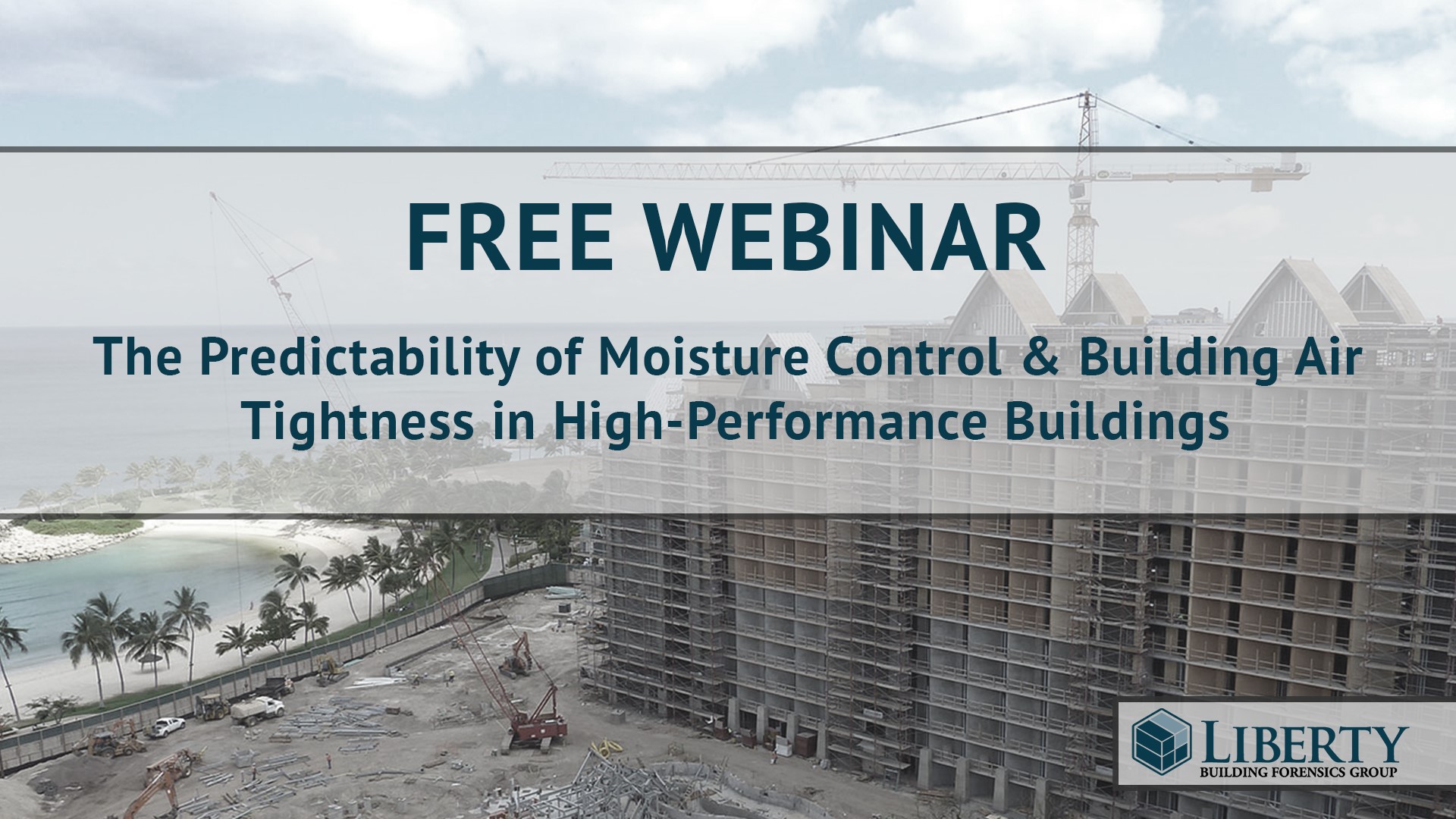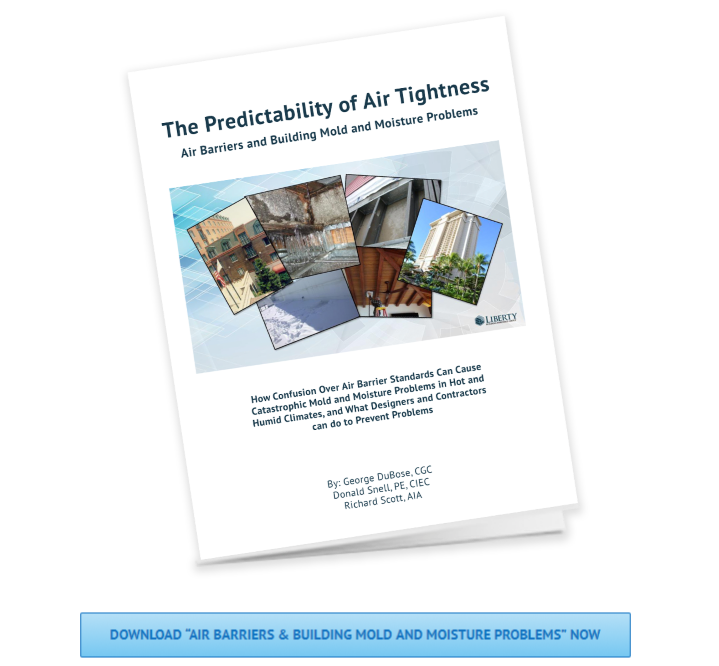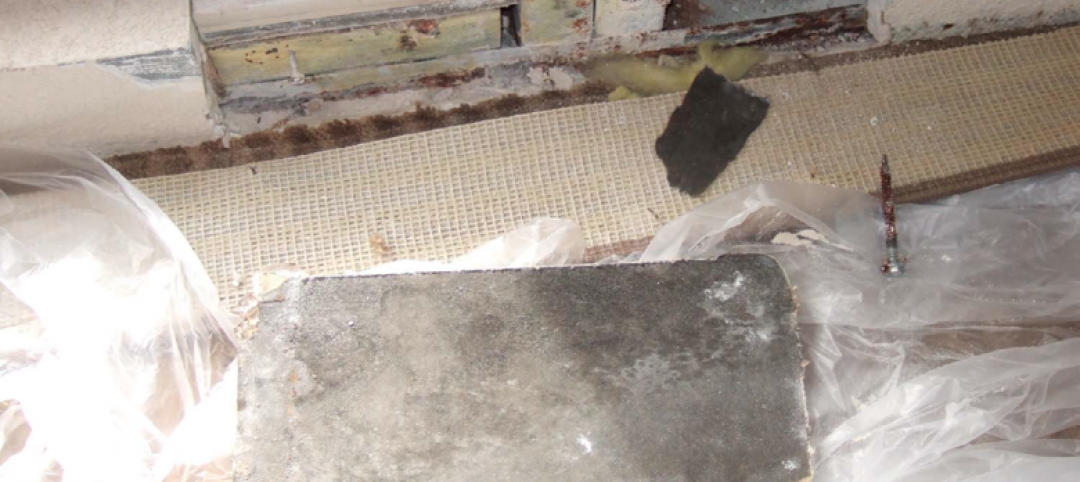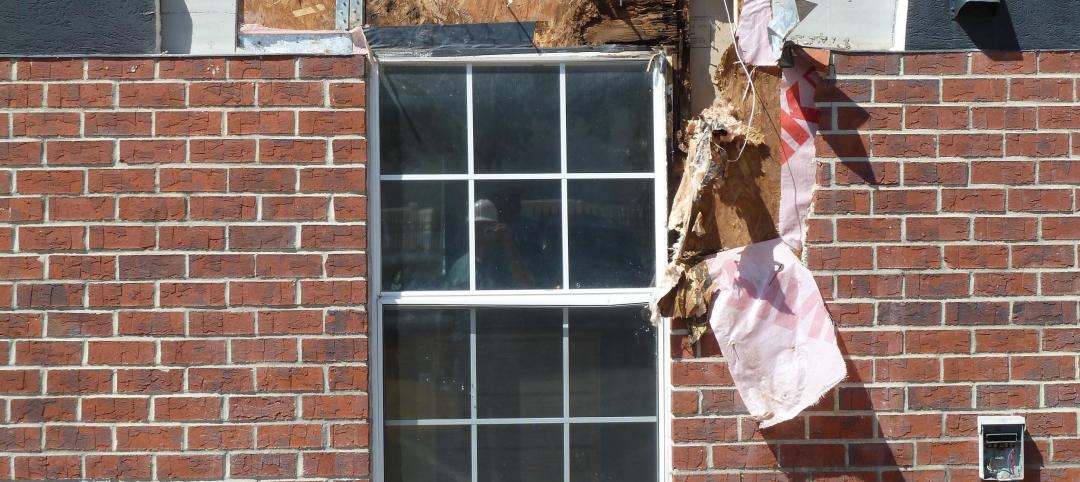Imagine the following scenario: you just designed your newest project to meet the most current whole building air leakage standards, and your mechanical engineer subconsultant has designed an HVAC system that includes one of the latest energy recovery strategies. Both factors are intended to meet high energy efficiency goals, making you proud that your firm is doing its part (amongst other things) to minimize your impact on the climate change problem.
Now fast forward to the first summer of operation. You get the dreaded call that your design has led to catastrophic mold and moisture problems that are keeping your client from being able to rent rooms and are resulting in unfavorable complaints about visible mold and deleterious mold odors being made on TripAdvisor.
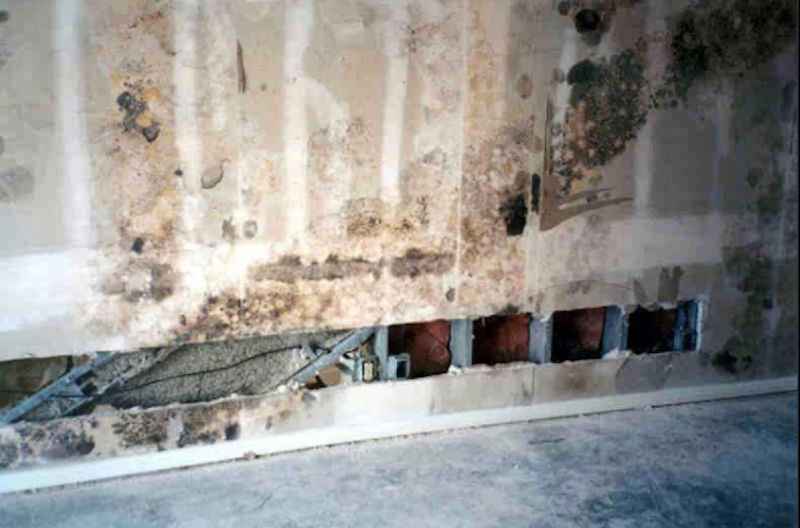 Small amounts of airflow over time result in some of the most catastrophic building mold failures.
Small amounts of airflow over time result in some of the most catastrophic building mold failures.
The problem is that despite significant advances in air barrier understanding within the design and construction industry, many aspects about air barriers are still not well understood and, as a result, are leading to moisture and mold problems (especially in hot and humid climates).
In response to this critical issue, Liberty Building Forensics Group (LBFG) has produced an e-book that speaks directly to the most common air barrier-related factors causing mold and moisture problems in hot and humid climates.
The industry is currently experiencing a divorce between facade whole building air leakage performance requirements and HVAC system performance requirements. For example, driven by energy savings objectives, HVAC designers are using certain systems (such as heat recovery units, or HRUs) on a regular basis, virtually requiring the facade to perform in such a way that it becomes the primary differentiator between the building either experiencing or avoiding mold and moisture problems. (HRU use has even begun to occur in buildings like moderate class hotels on a more frequent basis.)
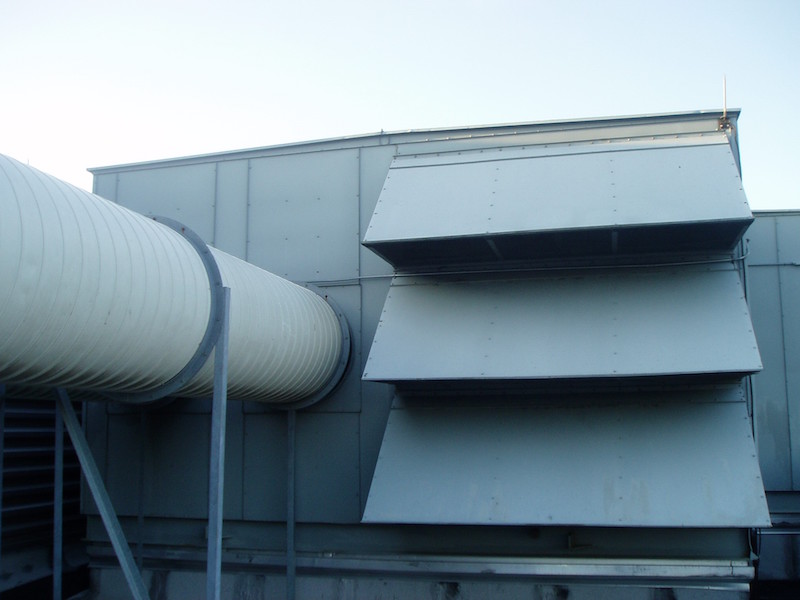 Heat recovery units (HRUs) like this one are being used more regularly now.
Heat recovery units (HRUs) like this one are being used more regularly now.
This reality is further complicated by the fact that both facade and HVAC designers are carrying out their respective roles within a vacuum of each other. In a hotel that employs an HRU system for both its make-up and exhaust air systems, this can be catastrophic.
Consider the case of a hotel in the southeast United States where LBFG was called in to assist. Although this was only a moderately priced franchise hotel, the architects and engineers had designed and installed an HRU system to service the seven-story building composed of guest rooms and public spaces. While this kind of HVAC system is usually only found in luxury hotels, it had become an option for this particular hotel because of local and federal incentives.
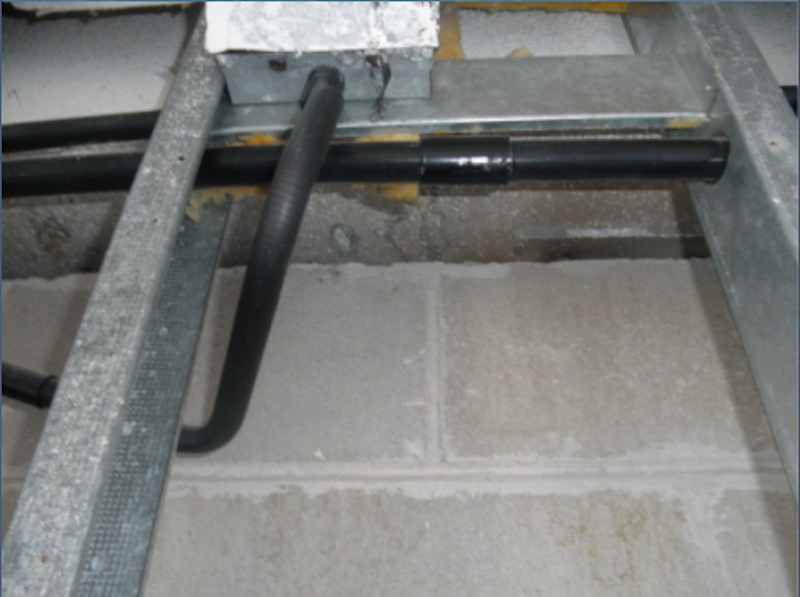 Performance-based facade installations don't always consider where facade leakage failures occur (at intersections of scopes of work).
Performance-based facade installations don't always consider where facade leakage failures occur (at intersections of scopes of work).
The HRU supplied 100% outside air as make-up air to the guest room, and used the toilet exhaust as its recovery air stream. Under a more conventional hotel design in the Southeast, one would expect that while the guest rooms would still receive make-up air and the toilet exhaust would still have exhaust, these would typically be separate systems. For example, it would be customary to use a separate 100% outside air unit to satisfy the make-up air needs in the guest rooms, while also installing a combination of individual exhaust fans with perhaps a roof booster fan that exhausted on a continuous basis a small portion of the total exhaust need for that stack.
The difficulty - and perhaps inherent risk - in the use of an HRU system to satisfy the make-up air and exhaust needs of a guest room is that the two air streams (in and out) must be very close together in order for the HRU to provide effective energy recovery. In the case of this hotel, LBFG experts found the design airflow differentials in each guest room to be as low as 3 cfm, making it impossible to have any assurance that the guest room would be positive in relation to the outdoors. The other problem was that after installation, the guest rooms could occasionally be negative (sometimes significantly) in relation to the outdoors, while in other instances they could be positive in relation to the outdoors. Considering ductwork leakage that occurs in vertical exhaust stacks (even within normal tolerances), this system will likely result in more air being exhausted from the room (and directly through the wall cavity), resulting in all guest rooms becoming negative in relation to the outdoors.
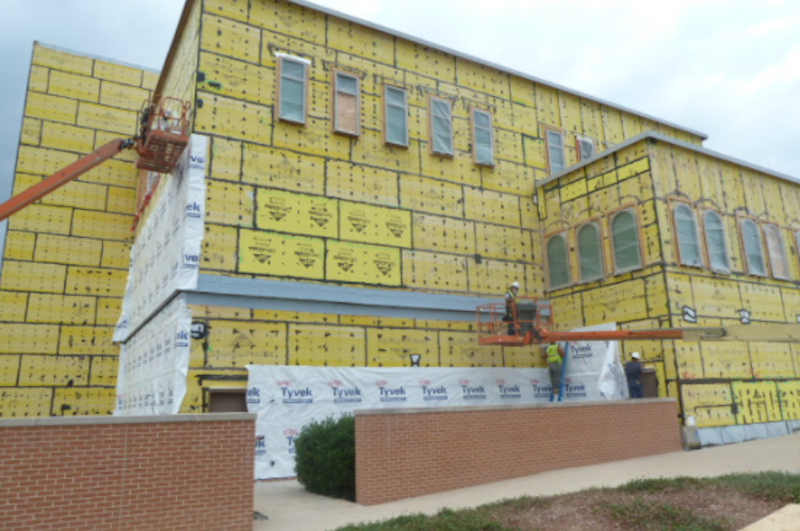 Confusion over air barrier standards can lead to expensive "corrections" that don't actually address the root problem.
Confusion over air barrier standards can lead to expensive "corrections" that don't actually address the root problem.
Employing an HRU design in a hotel like the one just discussed places a significant burden on the facade to prevent air leakage into the building through its components and over the entire field of the facade. One solution currently adopted by the industry is to conduct testing of components, systems, or even the whole building in order to gain some degree of confidence that air leakage into a building complies with a certain standard. Unfortunately for the designer, various testing standards can seem to compete with one another and are usually too complicated or ambiguous for the day-to-day practitioner. This can create a false sense of confidence. If a building leaks air at or below the level currently designated in standards, especially if it is located in a hot and humid climate, it will inevitably have mold and moisture problems.
True air leakage criteria is difficult to test for and often does not represent how a building will actually operate. LBFG sees many facades undergo stringent component testing at pressure differentials up to 300 pa, only to fail at 5 pa (the normal pressure many buildings experience throughout their lifetimes). The resulting continuous stream of outdoor air in a hot and humid climate can lead to catastrophic mold and moisture problems. Because this significant industry crisis is avoidable, LBFG has developed a webinar explaining how to mitigate against this risk on your current and future projects.
Learn how to avoid the mistakes that are being made in the design and construction of air barriers in many buildings located in warm, humid climates. By reading the new LBFG e-book and/or attending the complimentary LBFG webinar offered on this subject, learn what you need to do on your current project right now to avoid an air barrier-related catastrophic mold and moisture problem down the road.
George DuBose-CGC; Richard Scott-AIA, NCARB, LEED AP; and Donald B. Snell, PE, Cert. Mech. Contractor, CIEC are all building experts at LBFG.
LBFG President George DuBose, with over 25 years’ experience in building failures and a focus on mold and moisture issues as well as HVAC and building envelope failures, is co-author of three manuals on IAQ and Mold Prevention, which have been used on over $4B in construction.
Mr. Scott, a Senior Forensic Architect at LBFG with more than 35 years’ architectural experience and an expert in building envelopes, has conducted more than 500 forensic investigations and has helped solve some of the most complicated mold and moisture failures in the world.
Mr. Snell, a Senior Forensic Engineer/Vice President at LBFG with over 25 years’ experience with all aspects of HVAC systems, has used diagnostic and remedial solutions to help some of the largest commercial builders in the world with catastrophic moisture and mold intrusion resulting from HVAC failure.
LBFG has provided mold and moisture diagnoses and solutions for buildings to owners, contractors, and developers worldwide. The firm has project experience in the U.S., Canada, Mexico, the Caribbean, Central America, the Middle East, Southeast Asia, and Europe. Contact us at g.dubose@libertybuilding.com or by phone at 407/467-5518.
More from Author
George DuBose, CGC; Richard Scott, AIA, NCARB, LEED AP; and Donald B. Snell, PE, Cert. Mech. Contractor, CIEC | Feb 9, 2018
No building envelope is HVAC failure-proof
Building envelope & HVAC interaction in warm, humid zones
George DuBose, CGC; Richard Scott, AIA, NCARB, LEED AP; and Donald B. Snell, PE, Cert. Mech. Contractor, CIEC | Dec 13, 2017
Campus community management firms, beware!
An increasing number of legacy buildings, including aging student housing complexes, are experiencing water intrusion and mold-related damage that can be traced back to fundamental design and construction defects.

